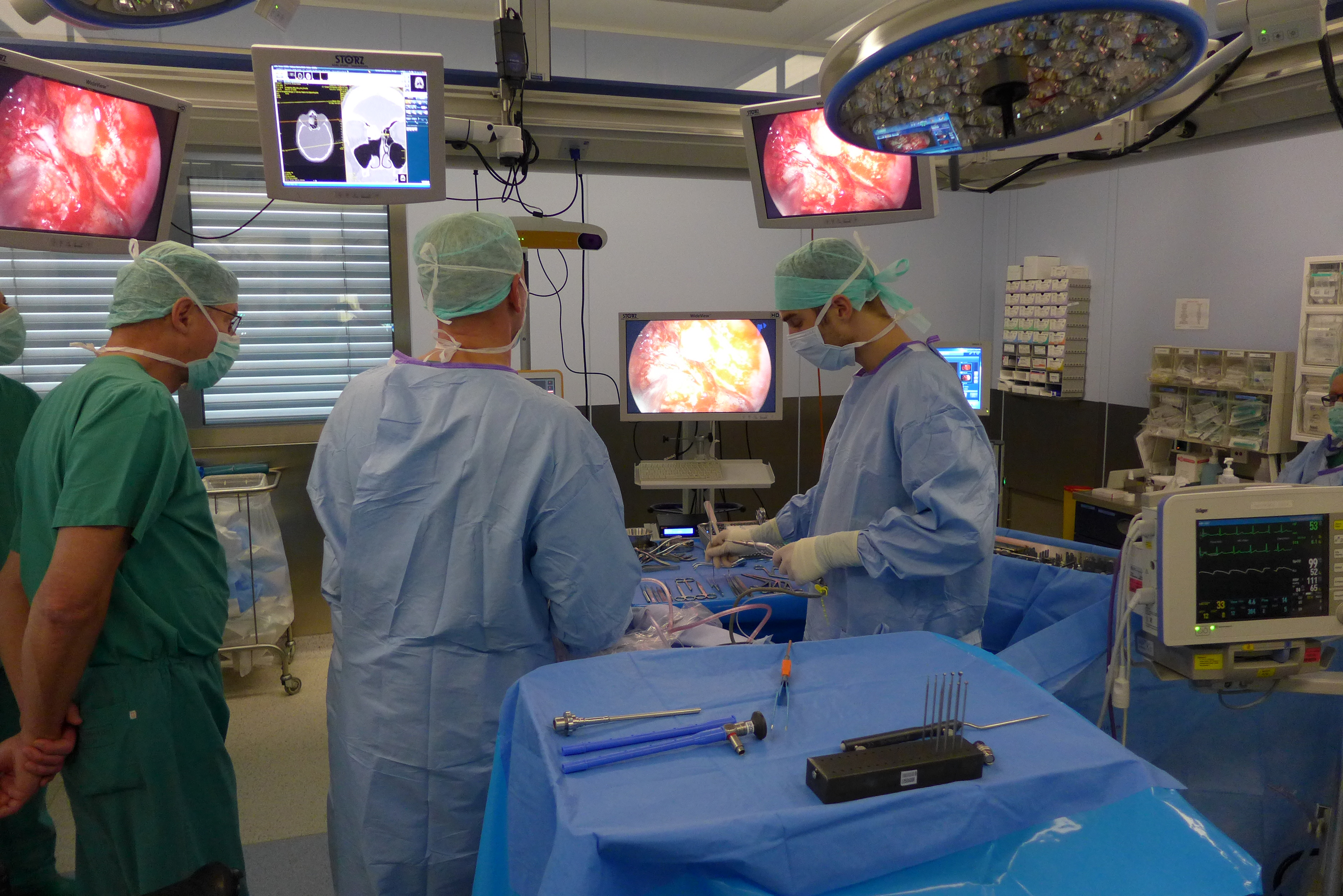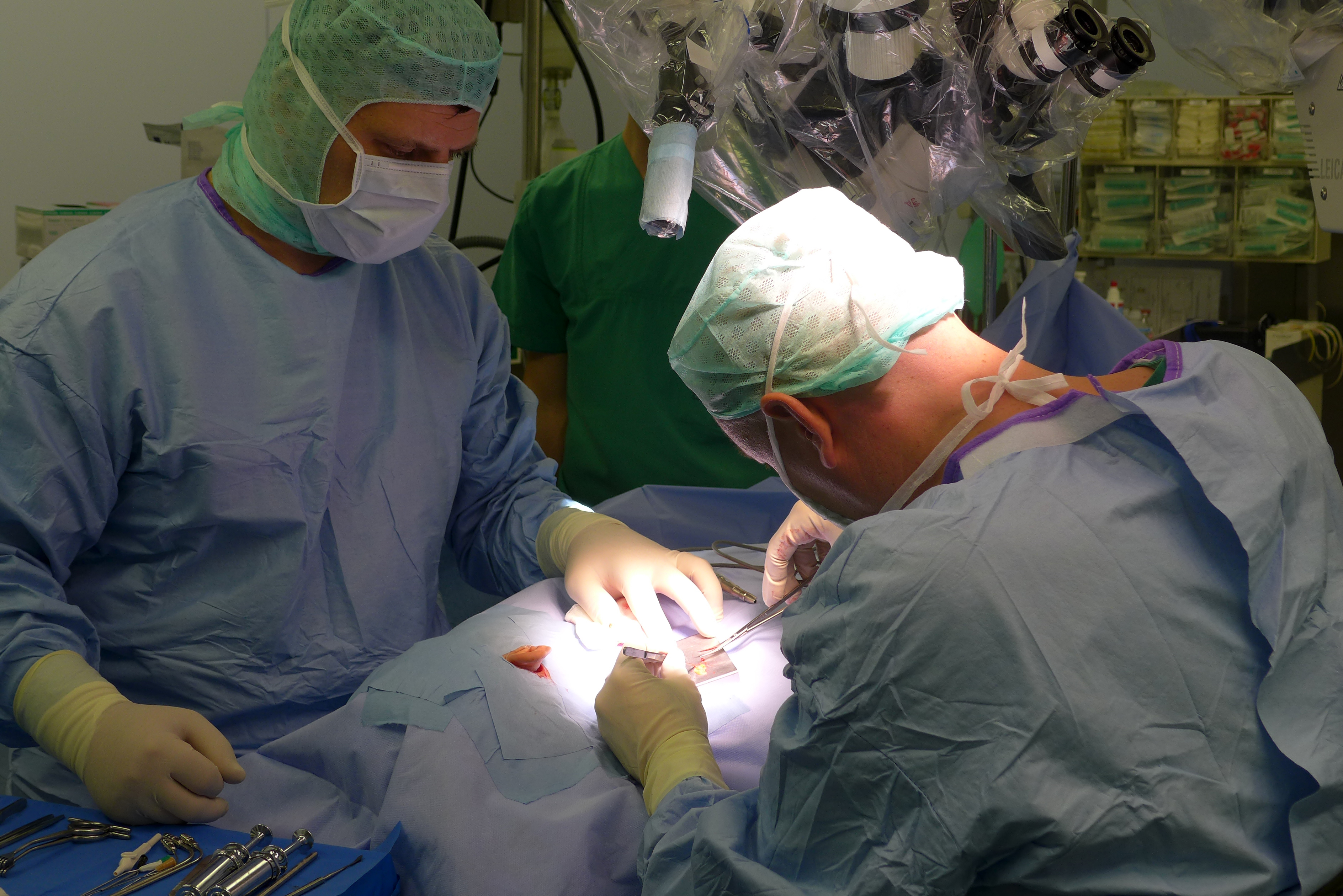Laryngeal cancer and laryngectomy
Worldwide numerous people contract a malignant tumor of the larynx (incidence in men 4-7/100,000 inhabitants) every year. In most cases the tumor can be treated with laser surgery or with radiation and chemotherapy without having to remove the larynx. However, if the tumor is extensive or recurring, then removal of the larynx (laryngectomy) is often required. Tumors of the hypopharynx or of the thyroid may also necessitate removal of the neighboring larynx.
After total laryngectomy there are various options for learning how to speak again. The method that used to be favored was esophageal speech, for which air was swallowed and then released by eructation. Today, the voice prosthesis is the quickest and most effective method of verbal communication following laryngectomy. The voice prosthesis is inserted during the laryngectomy surgery in an artificially created connection between the esophagus and the trachea (esophagotracheal fistula, shunt). Air can only be diverted from the wind pipe (trachea) into the food pipe (esophagus). The air should then flow upwards into the mouth. The flowing air causes folds of mucosal membranes in the neopharynx to oscillate, creating the sound for speech. So that the air flows upwards through the voice prosthesis into the mouth and not downwards into the stomach, the pharyngeal muscles and nerve supply to the pharyngeal muscles are cut through on one side during the laryngectomy (myotomy of the M. constrictor pharyngis and neurectomy of the pharyngeal plexus). The individual stages of this surgery are described in more detail in the following.
In cases of extensive cancer of the larynx, there may be metastases in the lymph nodes of the neck. This is why a laryngectomy is usually combined with removal of the possibly tumorous cervical lymph nodes (=neck dissection). As the larynx, an important organ in separating the food and wind pipes, is then no longer present, the wind pipe must be safely separated from the food pipe. It is sewn into the skin of the neck, creating a tracheostoma. A patient who no longer has a larynx must keep this opening of the wind pipe on the neck for the rest of his life. Eating and drinking through the mouth do not usually present any problems. However, the perception of taste is significantly reduced, and because nose breathing is no longer possible, the sense of smell is also affected.


